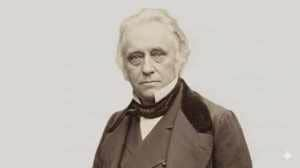MOTHER TO BLAME?
Hysteria around moms suspected of murder can warp judgment and logic

Kate McCann rarely cries in public, even when talking about her missing daughter, Madeleine. McCann has been described as cold and composed. She left her 3-year-old child and young twins unattended in a resort hotel room. While her children slept alone, she ate a meal that according to Portuguese media reports included 14 bottles of wine shared among eight people. (Kate and her husband, Gerry McCann, dispute this detail.) Do her actions and apparent lack of grief make her a bad mother? If so, does our fascination with less-than-perfect mothers make it all too easy for us to imagine her a murderer?
A mother murdering her child seems almost beyond comprehension. But when a child disappears, the suggestion of something amiss can often transform the mother from victim to suspect in the public imagination. If the mother fails to exhibit the expected signs of grief, or if the details of the case imply lack of caring, she can find herself at the vortex of outrage and media frenzy.
Two weeks ago, the McCanns were declared arguidos, the Portuguese word for official suspects. McCann joins JonBenet Ramsey’s mother, Patsy, and Australian Lindy Chamberlain as a mother of a missing child who, because she doesn’t act exactly the way we think she should in the face of tragedy, conforms to a deep suspicion that behind the facade of the perfect mother lies a murderess.
For Lindy Chamberlain, the rush to judgment is sadly familiar. “Here we have a mother and there’s talk about her being charged for murder, and once again they haven’t got a body; they’ve got no facts,” Chamberlain told Newsweek.
When 2-month-old Azaria Chamberlain disappeared in the Australian Outback in 1980, Chamberlain claimed a dingo had taken her daughter. She served four years of a life sentence for murder before being acquitted after flaws were found in the blood-based forensic evidence. Similarly, much of the case against the McCanns hangs on the presence of Madeleine’s DNA in the trunk of a rental car, but forensics experts warn DNA evidence is not as incontrovertible as TV crime shows suggest. “The big crime of all this is that while people are going, ‘Oh, the mother did it,’ the authorities and the public will stop looking,” says Chamberlain.
Like Kate McCann, Chamberlain was criticized after Azaria’s disappearance for appearing insufficiently distraught. “You can’t react normally; your facial muscles just won’t obey you, so people think you are hard. If you happen to smile in the wrong place or in front of the wrong person, well, then you don’t care. You’re supposed to live a normal life for your remaining children, but if you do the public say, ‘Oh, look, they’ve forgotten her already’,” Chamberlain says. But at the same time, Patsy Ramsey, who became a suspect in the murder of her daughter, JonBenet, was criticized for appearing too emotional, with reporters speculating her tears were an act. “It doesn’t matter what you do,” Chamberlain says. “You can’t win.” JENNIE YABROFF
— With Kendall Hill in Australia.
Newsweek







- 01
- 02
- 03
- 04
- 05
























